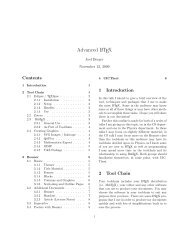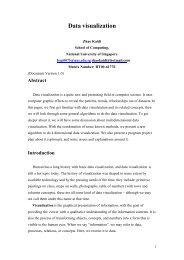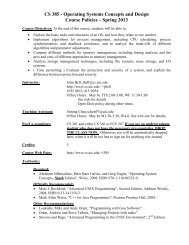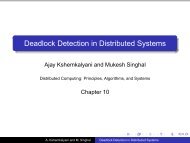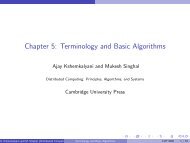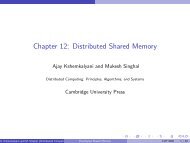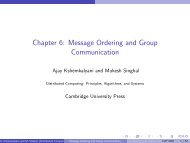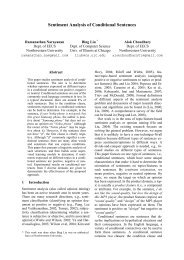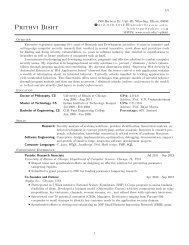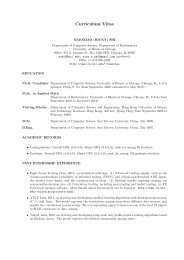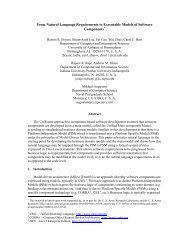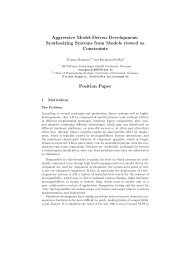character recognition using template matching - Computer Science
character recognition using template matching - Computer Science
character recognition using template matching - Computer Science
Create successful ePaper yourself
Turn your PDF publications into a flip-book with our unique Google optimized e-Paper software.
Character Recognition Using Template Matching<br />
Online Character Recognition<br />
In case of online <strong>character</strong> <strong>recognition</strong> there is real time <strong>recognition</strong> of <strong>character</strong>s. Online systems<br />
have better information for doing <strong>recognition</strong> since they have timing information and since they<br />
avoid the initial search step of locating the <strong>character</strong> as in the case of their offline counterpart.<br />
Online systems obtain the position of the pen as a function of time directly from the interface.<br />
Offline <strong>recognition</strong> of <strong>character</strong>s is known as a challenging problem because of the complex<br />
<strong>character</strong> shapes and great variation of <strong>character</strong> symbols written in different modes. In the past<br />
decades, a great deal of effort has been made towards solving this problem. ([1], [2], [3] [4], [5]).<br />
For a case study of online <strong>character</strong> <strong>recognition</strong> systems refer to the appendix section 9.2<br />
Offline Character Recognition<br />
In case of offline <strong>character</strong> <strong>recognition</strong> the typewritten/handwritten <strong>character</strong> is typically scanned<br />
in form of a paper document and made available in the form of a binary or gray scale image to the<br />
<strong>recognition</strong> algorithm. Offline <strong>character</strong> <strong>recognition</strong> is a more challenging and difficult task as we<br />
do not have control over the medium and instrument used. The artifacts of the complex interaction<br />
between the instrument medium and subsequent operations such as scanning and binarization<br />
present additional challenges to the algorithm for the offline CR. Therefore offline <strong>character</strong><br />
<strong>recognition</strong> is considered as a more challenging task then its online counterpart.<br />
The steps involved in <strong>character</strong> <strong>recognition</strong> after an image scanner optically captures text images<br />
to be recognized is given to the <strong>recognition</strong> algorithm.<br />
Document Analysis / Preprocessing<br />
Character Recognition / Classification<br />
Document Analysis<br />
The process of extraction of text from the document is called as document analysis. Recognition<br />
depends to a great extent on the original document quality and registered image quality.<br />
Character Recognition<br />
The <strong>character</strong> <strong>recognition</strong> algorithm has two essential components feature extractor and the<br />
classifier. Feature analysis determines the descriptors, or the feature set used to describe all<br />
<strong>character</strong>s. Given a <strong>character</strong> image, the feature extractor derives the features that the <strong>character</strong><br />
possesses. The derived features are then used as input to the <strong>character</strong> classifier.<br />
Template <strong>matching</strong> or matrix <strong>matching</strong>, is one of the most common classification methods. Here<br />
individual image pixels are used as features. Classification is performed by comparing an input<br />
Department of <strong>Computer</strong> <strong>Science</strong>, JMI<br />
12



